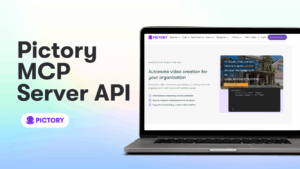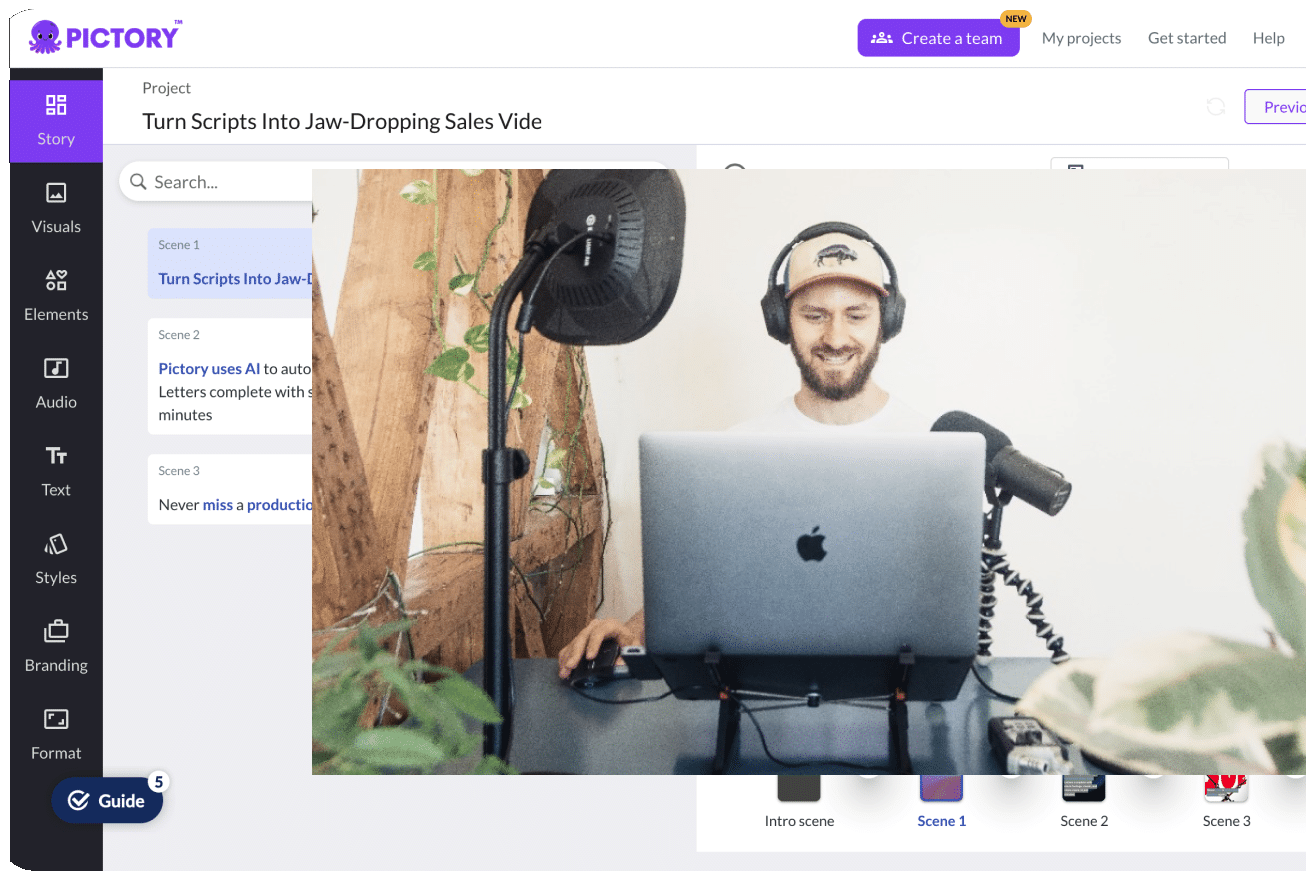Creating killer content is part science, part art.
You’re mixing data, creativity, and a dash of planning into your marketing recipe to craft the perfect content strategy.
Loaded with practical steps and actionable insights, this guide stands ready to empower marketers looking for knowledge in crafting refined marketing strategies that deliver impactful results.
TL;DR
A solid content strategy framework aligned with a strong brand voice and the content funnel helps boost brand awareness and generate leads.
Many forms of content marketing such as social media marketing and user-generated content. are a cost-effective way to generate a user community which will foster brand loyalty,
Start any content marketing campaign with clear content objectives that align with your business goals.
Identifying your target audience is always key. Look at what their wants and needs are and what kind of content they consume. Creating content for the platforms your ideal customers are already using is a surefire way to boost organic traction.
Similarly, use this research to create content that you know your customers already want. Address their pain points and craft intriguing and relevant content within that niche. Utilize different types of content marketing to address different needs.
And remember to link everything back to your brand vision, setting the right performance metrics to track the success of your content strategy. Acting and reacting to the quickly changing marketing landscape is how your content survives.
Why Marketers Need to Create a Content Marketing Strategy
Research conducted by the Content Marketing Institute reveals that upwards of 73% of marketers use content marketing as part of their content marketing strategy.
Well-crafted content strategies that utilize social media and other forms of content marketing help to meet their audience where they are.
By reaching out with more organic, engaging posts, businesses can boost brand awareness and establish themselves as an industry authority.
Focusing on the content funnel and on the desired outcomes of content can help businesses generate leads and keep those conversions by providing easily accessible information through emails and blogs, and great customer community through social media and user-generated content.
The Impactful Reach Of A Content Marketing Strategy
Have you ever admired how Google promptly responds with answers as soon as you start typing a question in the search bar?
In essence, Google passes on relevant nuggets from a well-crafted, high-quality piece of ‘information’ – in short, ‘content.
In addition to helping carve out unique standing on search engines or social media platforms, think of it this way: your content acts as the best salesperson your brand can ever ask for.
It works round-the-clock, addressing queries, creating brand awareness, and attracting visitors.
The more emphasis you put on content creation, the greater the momentum your business gains in terms of brand reach, audience engagement, lead generation, and conversions.
Making Your Brand Voice Be Heard

Here’s something we’d like you to remember.
Competition within the digital space is tremendous!
How, then, do you ensure your message is heard through all that noise?
That’s where a well-honed content marketing strategy swoops in to steal the show.
This is your golden ticket to carve out a niche where your unique style dominates.
An optimized content strategy breathes life into your brand identity through blogs or social posts that exude ‘you’ at every interaction point.
Content Amplifies Other Marketing Efforts
Think of your SEO efforts or email marketing campaigns as vehicles.
They certainly carry all the potential needed to cross the roads, leading to increased visibility or customer engagement if left standalone.
However, power-hosing these mechanisms with high-quality fuel (i.e., effective content optimization) boosts performance multifold, driving organic traffic toward all corners of your web presence.
In other words, an effective content strategy amplifies all other marketing tactics as well as creates synergies between different customer touchpoints.
The 6 Steps of Creating a Content Strategy
Creating a content strategy seems overwhelming at first, right?
However, breaking down the process into digestible, step-by-step stages can make this seemingly colossal task much more manageable.
Let’s get right into these steps that would streamline your content marketing efforts and guide you toward developing that winning content strategy.
1. Define Clear Content Marketing Objectives

“Objective Clarity is Key to Success”
Here’s a thought. In your everyday life, how often do you set objectives?
Maybe when eyeing that promotion at work?
Are you saving up for that dream vacation or even shedding those extra pounds?
It goes without saying – that goals give us direction and purpose.
They help us keep track, measure progress, and create a vibe of fulfillment once crossed out from our list.
So why should creating a content strategy be any different?
We kick things off by setting clear objectives tied to your larger business goals.
Understanding Your Business Goals

Your content marketing objectives must encapsulate your broader business vision.
With business landscapes wildly differing from one another, naturally, so would their goals.
Are you trying to increase brand awareness? Generate more leads? Or boost revenue?
For example, an e-commerce venture may prioritize driving sales, while an industry expert might focus on establishing authority or thought leadership within their niche market.
Point being, that tuning your content strategy with actual business needs keeps it grounded, serving real-life business requirements rather than just existing as an isolated entity.
Setting SMART Objectives

We’ve certainly heard about SMART objectives before.
They are Specific, Measurable, Achievable, Relevant, and Time-bound.
The concept resonates well here, too!
Let’s reiterate why they matter.
Specific: Each objective should possess laser-like specificity.
No vague territories.
Think “increase website traffic by 30% within the next six months” rather than a generic “increase traffic.”
Measurable: How else would you gauge progress without measurable objectives?
It’s imperative to quantify success.
In the above example, streamline your efforts towards hitting that 30% extra organic traffic instead of hovering around undefined parameters.
Achievable: Are your objectives achievable?
Setting unrealistic goals could steer your content marketing efforts toward failure even before it begins.
That doesn’t mean aiming low, but a fine balance where you’re stretched yet not overwhelmed.
Relevant: Tying back to business vision asserts relevance.
Allow for seamless integration between content strategy and real-world timely objectives to keep everyone on the same page, setting comparable standards across different time frames.
Time-bound: Attach a deadline to give your efforts focus and urgency.
Be realistic in your estimations, as otherwise, you may end up discouraged or feeling like a failure.
Measuring the Success of Your Content

Breaking any long-term goal into smaller bites improves manageability and visibility of progress.
Measuring success through Key Performance Indicators (KPIs) gives observability to these incremental improvements (or the lack thereof), guiding you better in evaluating performance tied to specific objectives.
With clearly defined and measurable objectives, you can craft content designed to move the needle on what matters most to the business.
Setting the right content goals for your business is the most important building block to start your content marketing strategy.
2. Identify and Analyze Your Target Audience Before You Create Content

“Know Your Audience Inside and Out”
Getting to know your target audience is not just a nice thing to do but a must-do in your content marketing strategy.
With the digital world brimming with information, it’s essential to cut through the noise and grab the attention of your audience directly.
To do this effectively, you need to know who they really are.
Create Audience Personas
Creating audience personas is a proven way of understanding your customers better.
These aren’t figments of imagination but representations of real people who might be interested in your product or service.
Building these buyer personas often includes gathering demographic information like age and location but can drill down to more specific details such as what social media platforms they use most frequently or what time of the day they are most likely online.
Include basic demographic information like:
Age
Location
Gender
Income level
Education status
Common roles/titles
Then, dig deeper to uncover the “why” behind their behaviors:
Core values and beliefs
Motivations
Goals
Major pain points and challenges
Common objections
Questions they frequently ask
Audience Behavior Analysis

Analyzing how your audience behaves gives you an edge in understanding what type of content resonates best with them.
Carefully watch the signs that show which touchpoints lead to conversion.
Do users typically sign up after reading a round-up blog post?
Or do they convert after watching a video on Instagram?
Use these insights to customize your content production approach.
Look for trends and patterns.
This reveals the specific types of content and topics that resonate best with each audience segment.
You can then optimize your editorial calendar to align with their preferences.
Conduct Competitor Research
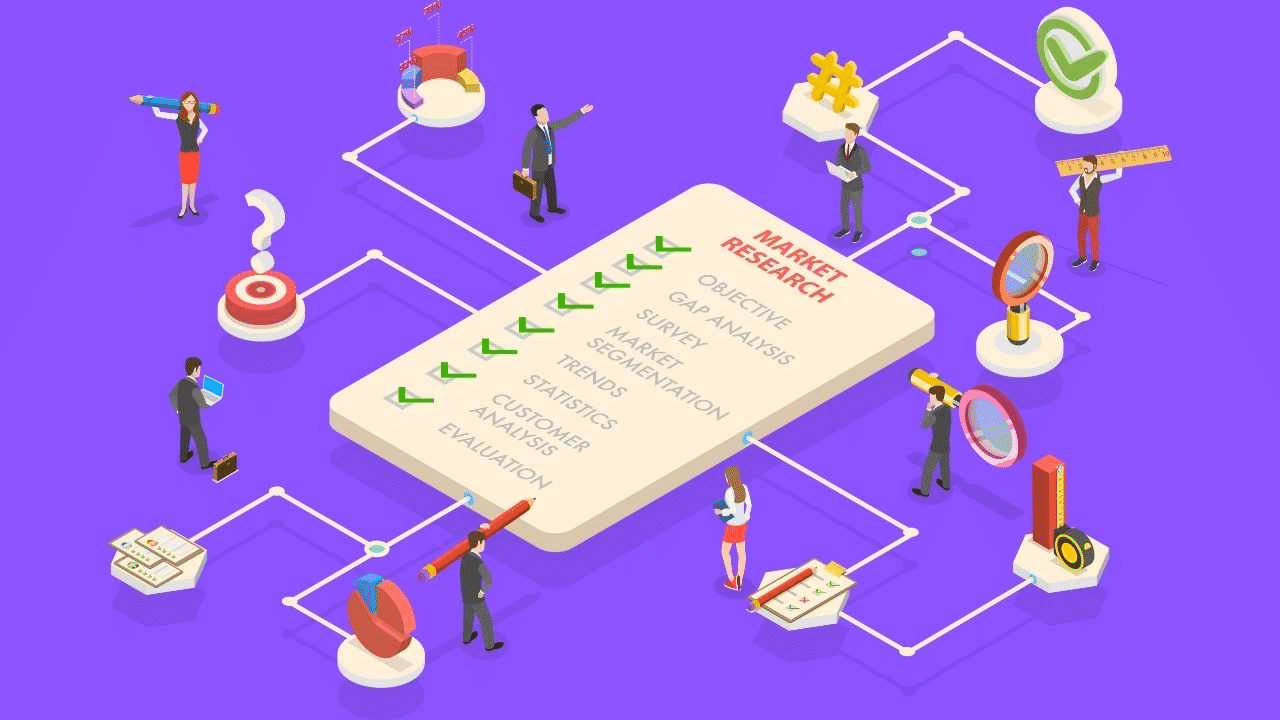
A thorough content audit, or analysis of competitors’ strategies, offers substantial insights into what works well and what areas need improvement.
Once again, look out for patterns like where their organic traffic predominantly originates from or which keywords are often ignored by them but could fetch higher ranks on search engines.
You’re not trying to copy your competitors.
You’re learning from their successes and failures so you can create content that’s even better for your audience, putting you a step ahead in delivering premium content that really connects with your target market.
In other words, find a gap in the market and fill it to the best of your abilities.
3. Craft Compelling Content Categories and Topics
“Content That Resonates”
Creating content that resonates with your audience is the heart of any content marketing strategy.
Your careful planning and clear objectives will be in vain if your content doesn’t strike a chord with its intended audience.
This step is about uncovering what topics ignite your audience’s passion, pique their curiosity, or offer them genuine value.
It’s about identifying themes that will become the backbone of your high-quality content creation process.
Topic Ideation
Identifying relevant, engaging topics for your content can feel like finding a needle in a haystack at first.
But, with some systematic brainstorming and strategic thinking, you can discover an array of enticing themes for your audience.
Research trending topics within your industry by diving deep into social listening tools or soaking up insights from online communities where potential customers hang out, such as Reddit threads or Facebook groups.
Use search engine analytics for popular keyword phrases to upsurge visibility in search results.
Another source of valuable information? Your existing customers!
Encourage user-generated content or use questionnaires to gather insights about what questions they have, problems they need solving, or information they’re actively seeking.
Creating Content Pillars
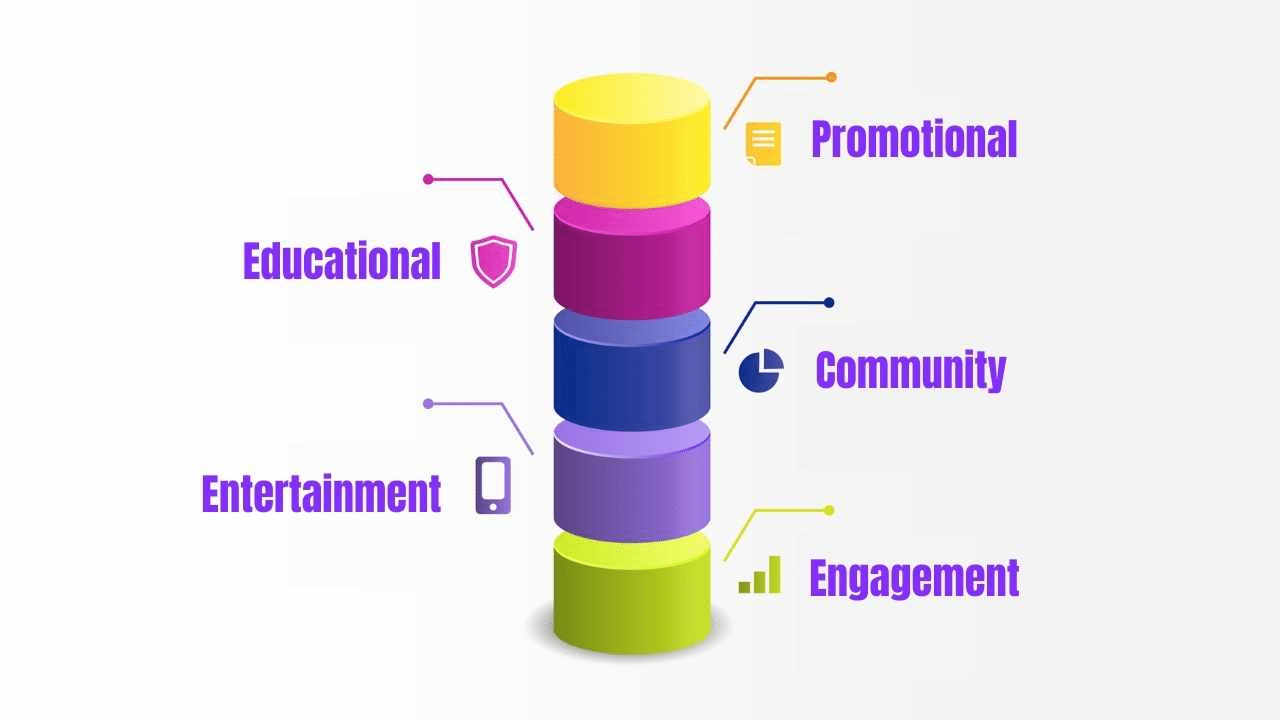
Once you have an idea of what types of content ideas engage your viewers most effectively, group them under broader categories referred to as ‘content pillars.’
These pillars help organize different themes under one umbrella term, simplifying structural planning and offering a cohesive experience across various touchpoints on your site.
For instance, a fitness business might have ‘Healthy Recipes,’ ‘Workout Plans, ‘ and ‘Mental Wellness’ as key pillars to guide its overall content management system.
You can also organize ideas into content pillars or categories based on broader themes like:
Thought leadership
Customer education
Product updates
Company culture
Industry Commentary
Keyword Research

Finding the right keywords for optimizing your articles or blog posts may seem taxing.
Nevertheless, they are crucial for increasing organic traffic from search engines both directly and indirectly.
Use tools such as Google’s Keyword Planner, Ahrefs, or any other keyword research tool you prefer to identify keywords relevant to your content topics.
Incorporate them naturally into your content while avoiding keyword-stuffing – we want to keep things engaging for humans, not just search engines!
4. Diversify Your Content Types and Formats
“Variety Keeps Your Audience Engaged”
Imagine having to eat the same thing for breakfast, lunch, and dinner each day.
Boring, right?
The same goes for content.
To keep your audience engaged and eager for more, you need to spice up your content offerings by incorporating a mix of content types and formats.
Using Different Content Formats
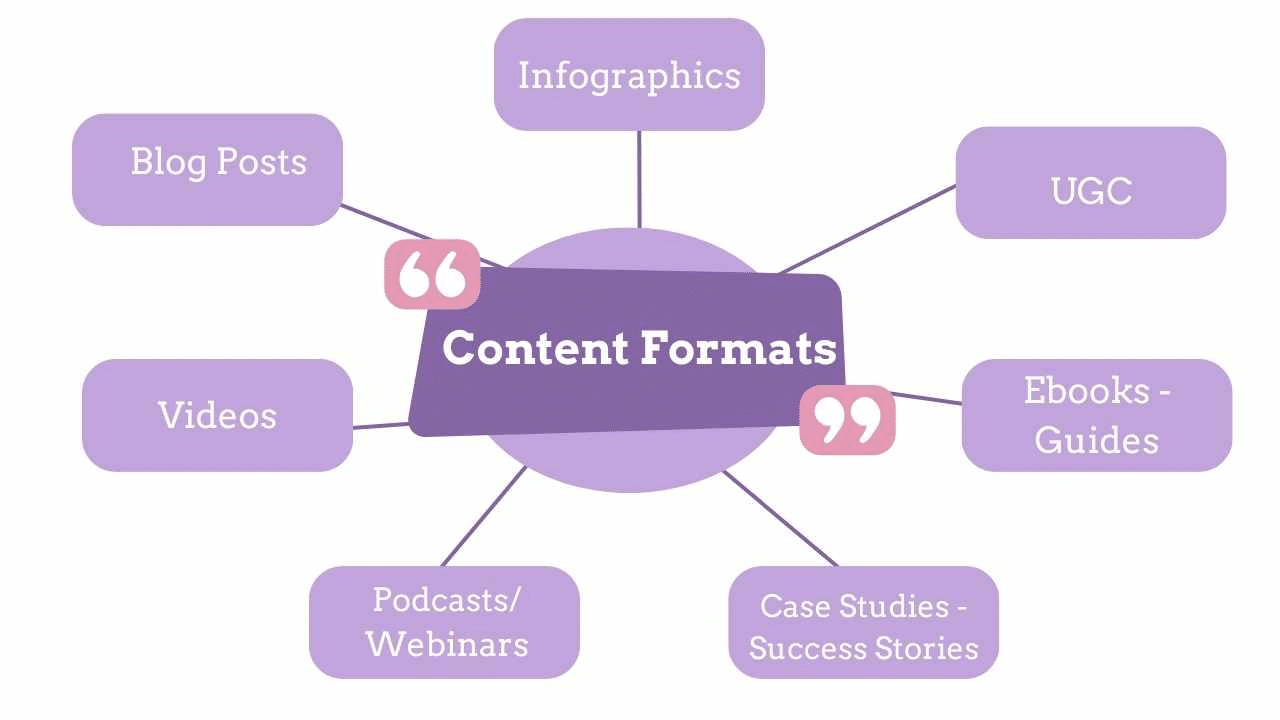
Just as you would not want to read a book full of blank pages, neither do your potential customers want to see only one type of content.
Exploring different content formats keeps things fresh for your audience while also catering to their varied preferences.
Here’s a quick rundown of some popular formats:
Blog Posts: These are great for SEO and can range from industry insights and tips to company updates.
Videos: A powerful medium that increases engagement on both websites and social media channels.
Infographics: They are engaging, shareable, and perfect for conveying complex information in an easy-to-understand visual format.
Podcasts/Webinars: An excellent way to delve deeper into topics or provide interviews with industry experts.
Case Studies/Success Stories: Give credibility to your product or service by showing how it’s benefited real customers.
eBooks/guides – In-depth downloadable content to educate readers on specific topics. Include actionable advice, how-to’s, and checklists. Gate with opt-in forms to collect leads.
User-generated content: Leverage loyal customers’ advocacy as organic promotion within their own circles.
Use these various formats strategically across different stages of the buyer’s journey, catering towards a specific purpose at each stage.
Repurposing Content for Different Platforms
Churning out unique pieces day after day might become cumbersome over time!
This is where the magical art of repurposing comes in handy!
Have you ever thought about turning that well-received blog post into an infographic?
Or breaking down that comprehensive guide into bite-sized social posts?
Repackaging existing top-performing assets stretches its lifespan while offering multiple means to engage varied segments within audiences.
Not to mention, it saves you valuable time and money.
One popular trend nowadays is repurposing long-form videos into short-form videos that fit well with viral TikToks and YouTube Shorts.
Creating Evergreen Content
Evergreen content is simply content that remains relevant regardless of trending time or season.
This timeless media serves as a consistent source of organic traffic with little need for updates or changes.
While not every piece should be evergreen, informative pieces like ‘How-to’ guides, FAQ pages, or industry basics tend to serve well as long-lasting traffic pullers.
By diversifying the scope and format of your content production process, adding bits of novelty here, and repurposing there, you’re on track to keep the audience intrigue alive.
You’ll also be increasing the likelihood of fresh viewers discovering you through reprocessed snippets across different distribution platforms.
5. Choose the Right Channels and Posting Frequencies for your Content
“Be Where Your Audience Is”
Creating a masterpiece is fantastic — but the work doesn’t stop at content creation.
The next challenge is getting your carefully crafted content in front of your target audience.
And that requires choosing optimal channels and posting frequencies.
Meet them where they already hang out online.
Balance consistency with variety.
Selecting the Right Content Platform

Analyze audience demographics and behavior to ID where they are most active online.
For example, B2B buyers frequent LinkedIn.
Millennials and Gen Z gravitate toward Instagram, TikTok and YouTube.
Everybody emails, so don’t forget to leverage email subscribers and adapt based on the audience.
Here’s a quick rundown of some common channels:
Facebook: Great for targeting older demographic groups with all kinds of content.
Instagram: Ideal for visual content like photos and short videos, targeting younger demographics.
LinkedIn: Perfect for B2B businesses or thought leadership pieces.
Email Content Marketing: Fantastic for personalized promotions and direct reach-out initiatives.
Each channel comes with its own unique strengths.
Exploring these can enhance total engagement across all platforms.
Content Distribution Strategy
Create a documented strategy detailing channels, posting frequency, promotion tactics, and more.
Your social media strategy, for example, can take the following form:
– Posting Frequency
Viewers appreciate regularity, but overloading them with information could potentially backfire.
Find your sweet spot.
A content calendar and scheduling tools are ideal for this.
– Optimal Post Timings
Every online platform sees peak hours when users are most active.
Align your content calendar to publishing at these times.
Doing so increases visibility and engagement opportunities.
– Hashtag Optimization
Appropriate usage of hashtags widens your reach to specific interest groups on social platforms who might not be following you yet.
This is also something you can include in your content calendar.
It will make it easy to create content that is well-optimized.
– Content Syndication
Consider this amplifying your voice.
Having your top-notch blog posts published by other popular websites leads to broadening your reach, which directly impacts website traffic.
– Influencer Outreach
Collaborating with influencers who resonate with your brand values can have a massive effect on brand advocacy.
Their shout-outs about you legitimize your relevance within their loyal follower base.
– SEO Optimization
A well-optimized post aims directly at higher search engine rankings, which primarily govern organic traffic volume growth.
Be sure to use target search phrases in headings, subheadings, alt text of images, and naturally throughout the piece without keyword stuffing.
– Social Media Engagement
Don’t just talk; engage!
Initiate conversations around posts; response times count in creating a positive impression about you among their followers.
6. Connect Your Content Strategy to Business Purpose
“Content as a Strategic Asset”
Finally, the magic happens when your content strategy transcends beyond just ‘content’ – it should be a strategic asset that provides real-world business value.
The ultimate objective of an effective content marketing strategy is supporting your overarching business goals.
Content should further your brand messaging, fuel the customer journey, and drive measurable growth.
It’s not created for its own sake but to build your business.
Aligning with Brand Values
Your brand values are your business’s soul.
Ensure your content strategy closely reflects and reinforces your desired brand image, voice, and core values.
Every piece of content is an opportunity to communicate your unique positioning.
For example, an eco-friendly brand can consistently create content on sustainability, green living, conservation, and environmental protection to reinforce its values.
Your content presence, topics, tone, imagery, and messaging should all align back to your brand promise.
This strengthens awareness and recognition.
Mapping Content to the Customer Journey

Step into your customer’s shoes.
Throughout their journey with your brand, they navigate several stages of the content funnel (link to content funnel when posted) — learning about you, comparing options, and finally making a decision.
As marketers, our ultimate goal is not only attracting viewers but leading them down the path where they convert from possible leads into loyal customers.
Identify key customer touchpoints throughout the buyer’s journey.
Then, develop tailored content to attract, nurture, educate, and convert audiences as they move through each stage.
Guide prospective customers from initial awareness to purchase and loyalty.
For example:
Awareness stage – Blog posts and videos explain your solution to the target audience’s problems and needs. Focus on what you offer.
Consideration stage – Comparison guides, assessments, and webinars showcase how you beat competitors. Highlight unique value.
Decision stage – Case studies, testimonials, and demos focus on ROI, proof, and credibility. Emphasize results.
Retention stage – Ongoing education through blogs, special offers, and community deepens loyalty.
Measuring ROI

All said and done, success down the road means seeing actual results that count, i.e., seeing an appreciable return on investment (ROI) for all marketing efforts put in place.
Again, KPIs come in handy in tracking these numbers, proving the effectiveness (or lack thereof) of every action stage within your content marketing strategy.
Conclusion
So, there you have it, a crash course in creating a successful content strategy that drives real results.
Make sure your business goals are at the forefront of all your content marketing efforts, and that you loop back to realign with them throughout creating content.
Implement these six steps to refine your approach toward creating a successful content marketing strategy.
When it’s time to build your video content marketing strategy, Pictory is the online video editor you need in your arsenal.
No bulky software download. No expensive freelancers. No video editing experience needed.
Just quality video content that will convert users fast.
Sign up for a Pictory account today and start making video marketing content in minutes.




